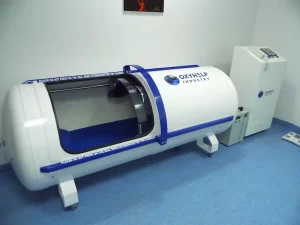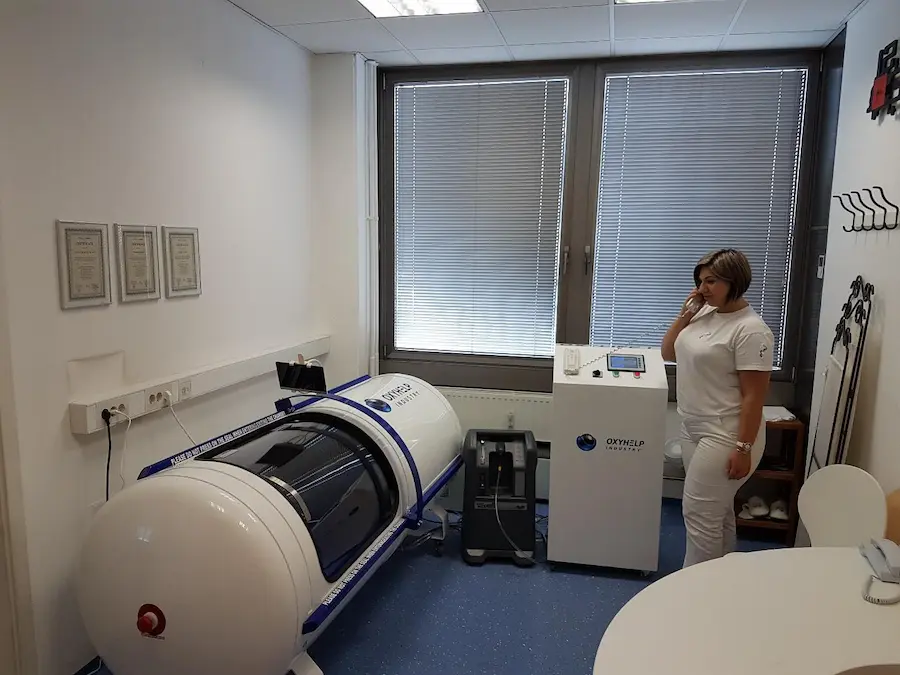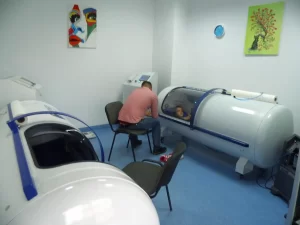Hyperbaric oxygen therapy (HBOT) is a form of oxygen therapy that is used to boost the healing of carbon monoxide poisoning, wounds that fail to heal on time, certain infections and also gangrene. To carry out this form of oxygen therapy, you’ll have to enter a special chamber (known as hyperbaric oxygen chamber) to breath in pure oxygen in high pressure of about 1.5 to 3 times higher than usual.
The primary aim of this therapy is to fill the blood with sufficient oxygen to fix worn out tissues and also restore the normal functioning of the body.
Table of Contents
How Did HBOT Start?
The hyperbaric oxygen therapy (HBOT) was first utilized in the U.S. in the early 20th century, and was later used again in the 1940’s by the U.S navy in treating deep sea divers suffering from decompression sickness. In the 1960’s, HBOT was used in treating carbon monoxide poisoning. Currently, HBOT is used in treating sick scuba divers and those with carbon monoxide poisoning, as well as miners and fire fighters.
Hyperbaric Oxygen Therapy has also been approved by FDA in providing relief for various conditions ranging from wounds to burns, to bone diseases. Some of these conditions include;
- Cyanide poisoning
- Crush injuries
- Decompression sickness
- Carbon monoxide poisoning
- Delayed radiation injury
- Actinomycocis
- Diabetic wounds
- Traumatic reduced blood flow in the arteries
- Gas gangrene
- Osteomyelitis amongst others.
What Are The Proven Benefits Of HBOT?
HBOT has proven to be highly beneficial in many ways, ranging from its effect on the skin, to the mental benefits it provides. Below is a rundown of the most notable benefits of hyperbaric oxygen therapy.
-
Hyperbaric Oxygen Therapy Stimulates The Production Of New Collagen And Skin Cells
HBOT foster the growth and development of new blood vessels. It also revitalizes the cells to secrete vascular endothelial growth factor (a substance that attract and triggers the endothelial cells needed for healing.)
-
Hyperbaric Oxygen Therapy Aids In Wound Healing
It does this by introducing oxygen-rich plasma to tissues that have been starved of oxygen. When your body gets caught up with any wound injury, it damages your body’s blood tissues, thereby leading to an abnormal release of fluids which leaks right into the tissues and causes swelling. This deprives the already damaged cells of oxygen, and your tissues tends to die off. Hyperbaric oxygen therapy therefore aids in reducing the level of swelling while providing a sufficient amount of oxygen to your tissues.
-
HBOT Inhibits The Effect Of Harmful Bacteria And Boosts The Body’s Immune System
Aside from its effects on the tissues, HBOT can also disable the harmful effects of certain bacteria. It increases the oxygen concentration in the tissues which helps defend against infections. Also, HBOT boosts the defense mechanism and ability of white blood cells to protect against invaders.
-
HBOT Also Protects The Body Against ‘Reperfusion Therapy’
Reperfusion is an acute tissue damage that occurs when blood supply returns to tissues after some time of staying deprived of oxygen. In an event where blood flow gets obstructed by injury, several activities inside the already damaged cells leads to the release of dangerous oxygen radicals. These radicals can cause several damage to the tissue that are irreversible. HBOT here stimulates the body’s oxygen radical scavengers to check out for molecules causing issues and let the healing processes continue.

How Is HBOT Done?
During HBOT, the air pressure in the hyperbaric oxygen chamber is increased to about three times the normal atmospheric air pressure. This high air pressure allows your lungs take in high amount of oxygen than they can under normal air pressure. HBOT can be carried out in two ways:
-
Sitting Still In A Big Chamber Under High Pressure:
This chamber hold two or more people and oxygen is inhaled through a mask or hood.
-
Laying Down Flat On A Stretcher That Slides Gently Into A Clear Tube
Unlike the use of mask or hoods, the pressure of the tube is only increased, until the tube is filled up with oxygen.
Who Can Go In For HBOT?
Due to the effect of this therapy on a wide variety of illnesses, many people are considered to be safe to go in for it. However, the best way to find out whether you’re fit for it is to consult your doctor or health specialist.
Who Shouldn’t Use HBOT?
HBOT is said to be a safe protocol, and there are just little things that may prevent you from benefiting from it.
- If you’ve got cataracts, it’s highly recommended you talk to your health care provider or consult us @OXYLIFE INDUSTRY to know the appropriate pressure you can use.
- In addition, if you’re a smoker, it is recommended you stop immediately before going for HBOT. This is because nicotine is highly incompatible with oxygen therapy as it tries to work against all the benefits of the therapy.
- There are also certain medications that may not be compactable with oxygen therapy. So, its important you carry out serious consultations to know your complete drug history and ensure you’re totally fit for the treatment.
- Are you currently battling with cold or flee, especially one that causes congestion in your ears and nose, it’s advised you postponed your therapy until you fully recover from this condition. The high pressure in the chamber might make the condition pretty worse.
Can Children Use HBOT?
Just like adults, children can also receive the benefits of HBOT. The major reason why pediatric HBOT (HBOT for kids) isn’t that popular in the world is because children don’t actually get effected with most of the disease and issues we deal with in adult hood. Conditions like diabetic ulcers, bone infections, less blood flow in the arteries are very rare in kids.
However, HBOT can be used in treating different health conditions in kids, ranging from carbon monoxide poisoning to wound healing and embolisms. Note that this treatment should only be carried out when recommended by your health care provider.
Though Children Can Be Treated With Oxygen Therapy, Not All Hbot Facilities Can Effectively Treat Child.


